E-mail: <aronper
Chemical Education Journal (CEJ),
Vol. 13, No. 2 /Registration No. 13-17 /Received January 30, 2010.
URL =
http://chem.sci.utsunomiya-u.ac.jp/cejrnlE.html
Abstract
Templates for constructing 3D models of octahedra possessing
12, 6, 3 or 2 curved edges are presented. The models can be constructed
in a workshop of one-hour long and used for the teaching-learning
of the symmetry descent from Oh-point
group to Td-, D3d-,
D3- and C2v-point
groups.
One of those octahedra turns chiral as a consequence of the lacking
of the improper symmetry operations s,
i, S4 and S6,
which can be objectively demonstrated if the enantiomorphic model
is also made.
Resumen (pdf, in Spanish)
Key words: three-dimensional models, curved-edge octahedra, Oh-symmetry descent.
a) Instructions for building curved-edges octahedrons
b) Determine the symmetry elements and point groups for curved-edges octahedrons
In recent years, many commercial products are offered in nice cardboard packets which are stylized polyhedra possessing curved edges (Figure 1). The function of those curved edges in the wrappings is not only to attract the purchaser's attention toward the brand or a feature of the product (Figure 1a) but also to pop-up the wrapping for putting the product inside as in the case of fast food cakes (Figure 1b) or scholar and personal cleaning articles (Figure 1c-d).
Whatever be the function of curved edges in the packages, the fact is that a great number of stylized polyhedra are appearing in the market and with it, an excellent opportunity to put our knowledge in practice in symmetry and its descent. For example, if four parallel straight-edges in a cube are converted into four curved-edges, its symmetry descends from Oh to D2h (Figure 1d).
Bearing this idea in mind, we design nice three-dimensional models of octahedra possessing 12, 6, 3, 2 and 0 curved-edges (Figure 2) to get Td-, D3d-, D3- C2v- and Oh-point groups of symmetry (Table 1). With the help of these models one can easily learn the essence of the Oh-point group and its subgroups, and the descent of symmetry in octahedral coordination compounds, which is a chapter of our advanced inorganic chemistry course.
|
|
|
|
|
|
|
(a) Octahedron with twelve curved-edges1 |
(b) Octahedron with six curved-edges |
|
(c) Octahedron with three curved-edges |
(d) Octahedron with two curved-edges |
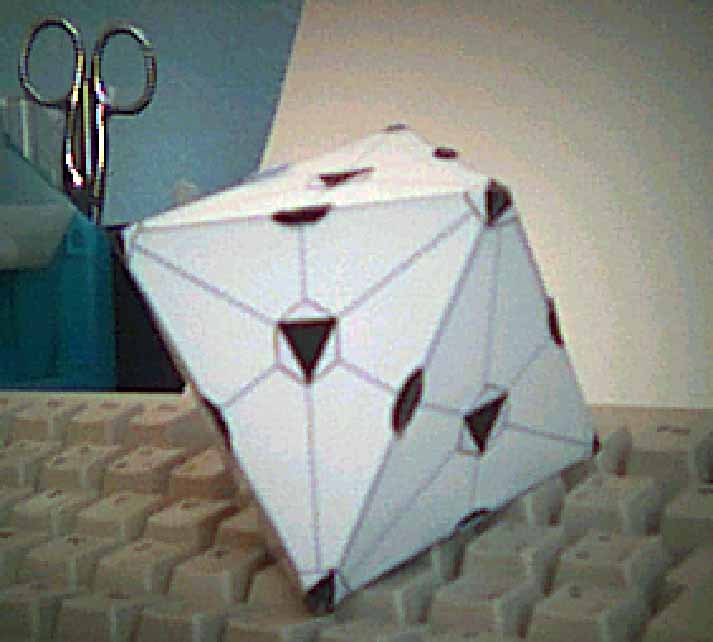 |
|
Figure 2 Three-dimensional models of octahedra possessing
a different number of curved-edges (a-d) and none curved-edges
(e). In the last one (regular octahedron), the location of its
symmetry elements are illustrated by means of stereographic symbols
(Perez-Benitez, 2003).
1 The template for building
this model is similar to that described in the website: "Creasing
Paper Along Curves" (Manshad, 2010).
Table 1 Geometrical features
of the octahedral models presented in this paper.
| Figure: | 2a | 2b | 2c | 2d | 2e |
| Number of curved-edges: | 12 | 6 | 3 | 2 | 0 |
| Point group: | Td | D3d | D3 | C2v | Oh |
| Template in: | Figure 4a | Figure 4b | Figures 4c and 4f | Figure 4d | Figure 4e |
Octahedron is a regular polyhedron composed of eight equilateral triangles, meaning that its 12 edges are of the same length. Octahedron is the dual of a cube with its six vertices located at the center of cube's faces. Both polyhedrons belong to Oh-point group with 48 symmetry operations: 24 proper (E, 9C2, 6C3 and 8C4) and 24 improper operations (9s, i, 8S4 and 6S6) (Hargittai, 2009). The symmetry elements associated with these symmetry operations are illustrated by means of their stereographic symbols in the model 2e and Figure 3 (Immel, 2009) and their locations are described in Table 2.
Figure 3 Location of symmetry elements in the octahedral anion PF6- (Immel, 2009).
Table 2 Location of octahedron's symmetry elements described for a regular octahedron (see Figures 2e and 3).
| Symmetry element: | Location: |
| S4 which generates to C4 and C2 | They cross through a pair of opposed vertices |
| S6 which generates to C3 | They cross through the center of opposed faces |
| C2 | They bisect a pair of parallel edges |
| sh | They are perpendicular to S4 and contain 4 vertices |
| sd | They bisect a pair of parallel edges and contain a pair of opposed vertices |
| i | It is at octahedron s center. |
The descent of symmetry occurs when some features of octahedron are changed (i.e. vertices or edges). If the changes occur along C3, the symmetry descends to D3d, D3 or C3v; whereas a change along C4 produces D4h, C4v, C2v, D2h or C2h and finally, if the change occurs along C2, the subgroups Td, D2d and C2v are produced (Scheme1; Reddy, 2005). In order to achieve some of these octahedron's subgroups, the straight lines of a regular octahedron were change systematically by curved edges to produce nice three-dimensional models possessing the number of curved edges described in Table 1.
Scheme 1 Subgroups coming from the reduction of Oh-symmetry by the changes occurring along C4, C3 and C2 axes (Modified from Reddy, 2005).
1. On cardboard copy the templates provided in Figure
4 and cut them out.
2. With the help of a razor blade or the point of a pen, score
carefully the inner lines and fold them.
3. Turn the flaps inwards and glue them up to close the model.
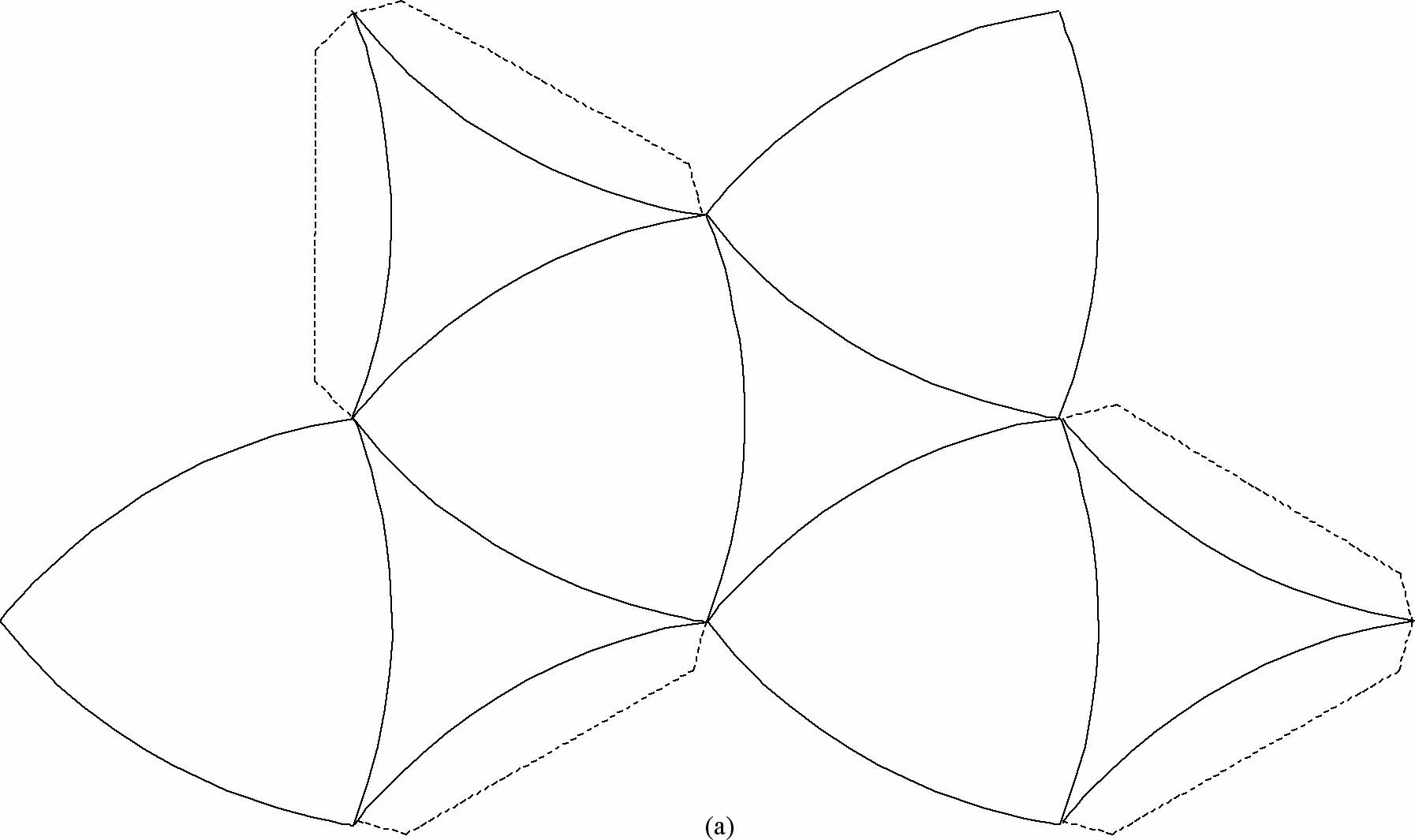 |
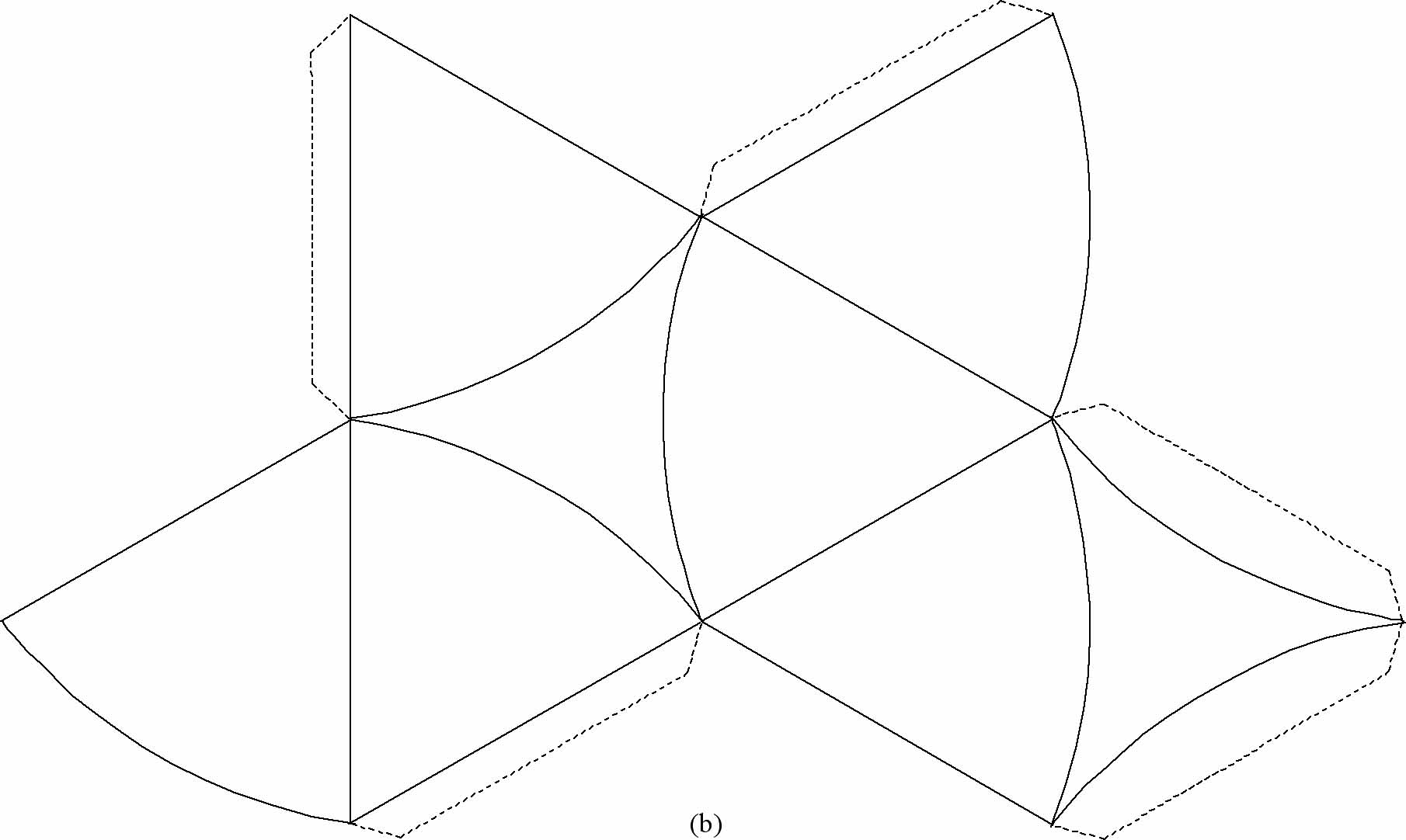 |
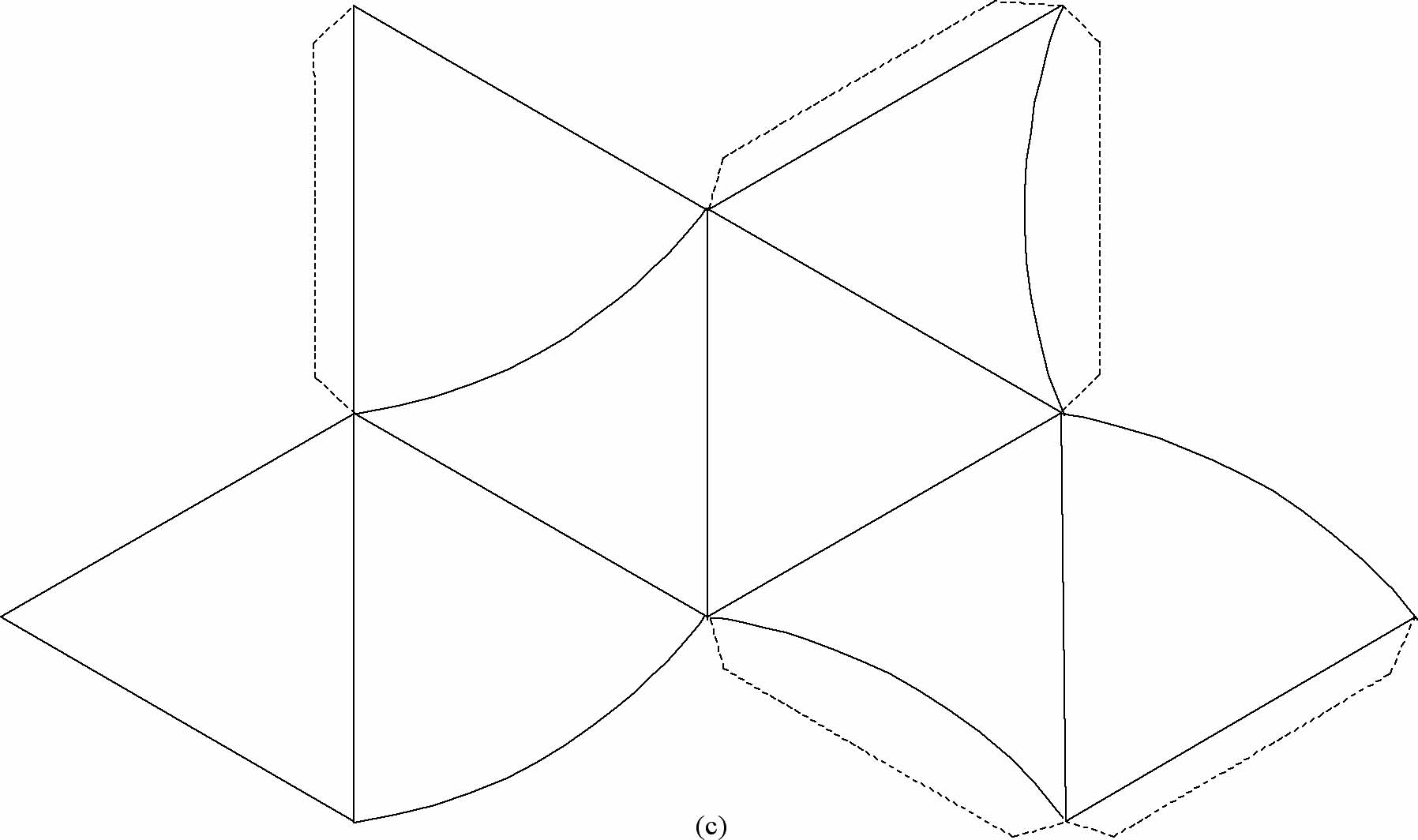 |
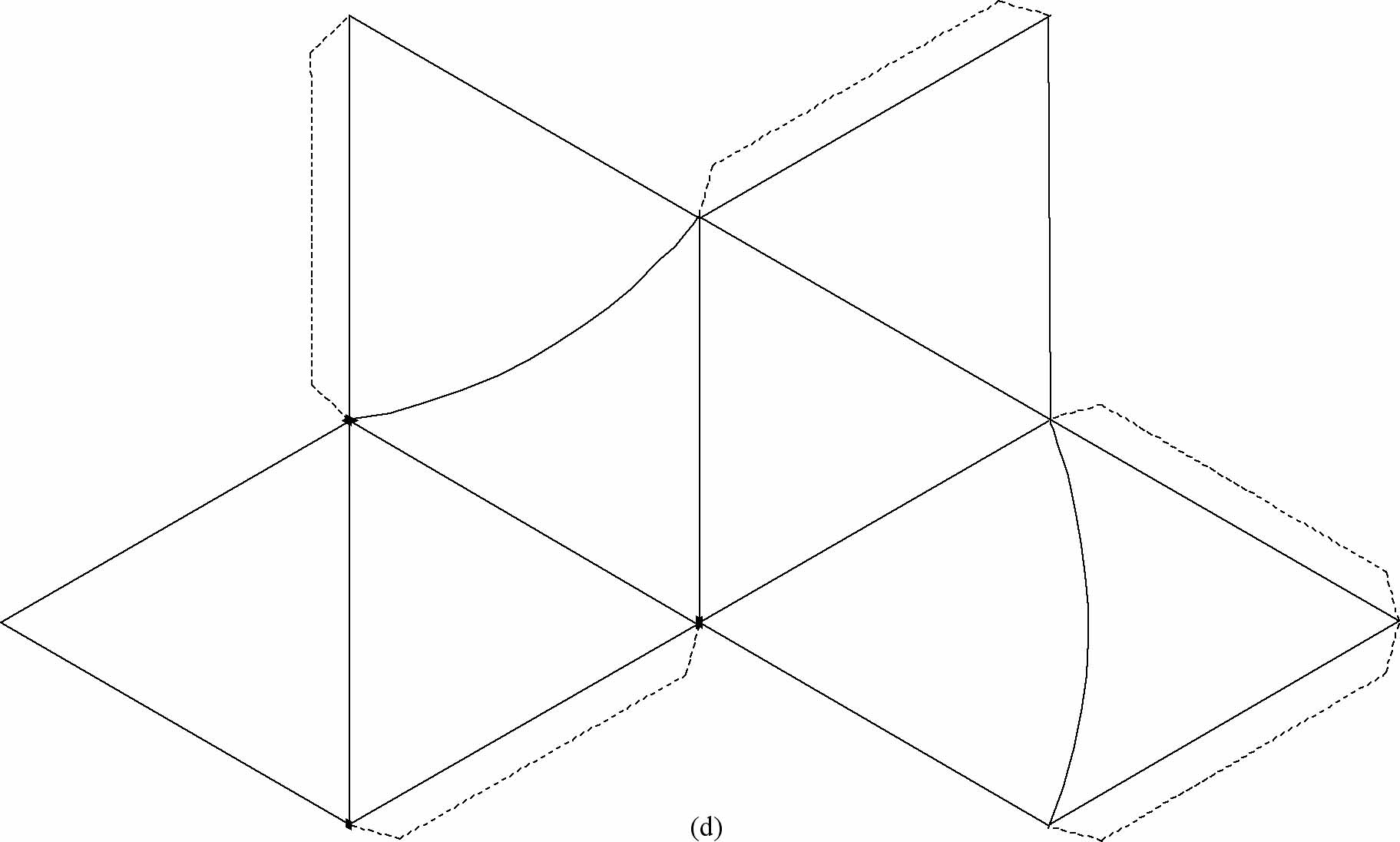 |
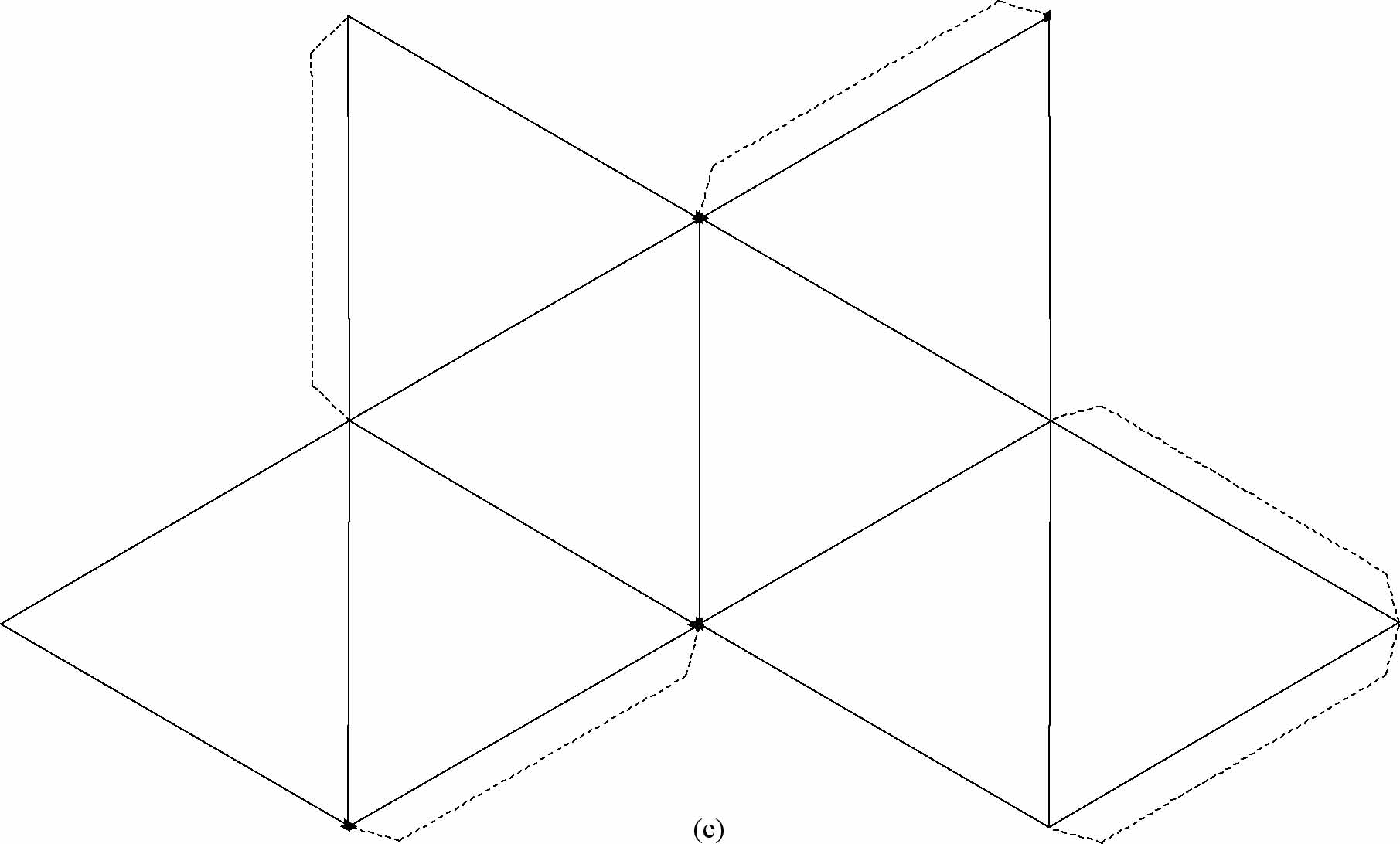 |
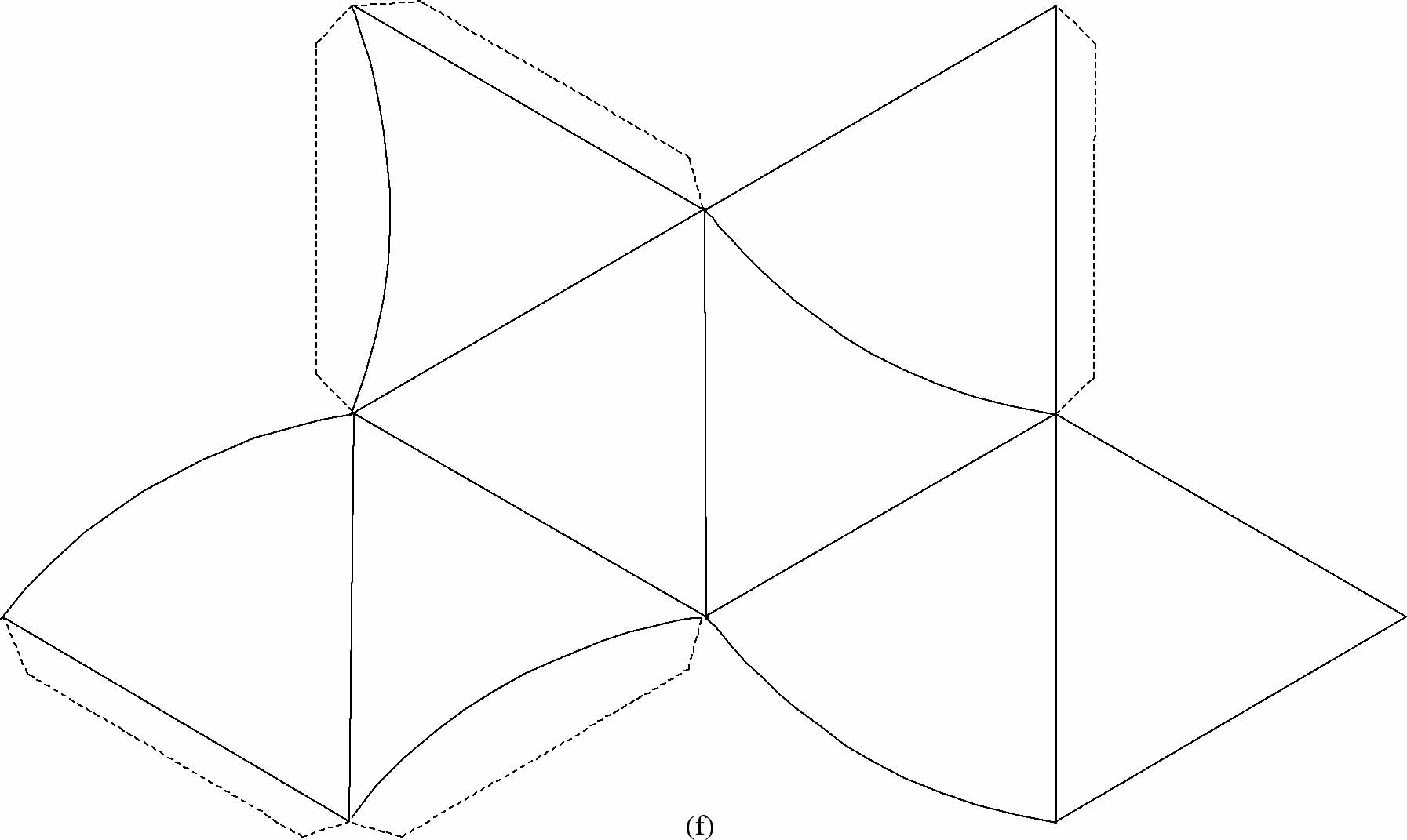 |
Figure 4 Templates for building three-dimensional octahedral models possessing twelve (a), six (b), three (c and f), two (d) and zero curved-edges (e).
1. Use the models and the flux diagram (Scheme
2) for determining the symmetry elements and the symmetry
point groups for the curved-axis octahedrons illustrated in Figure 2. Are you agreeing with data
in Table 3?
2. Which of the curved-edges octahedrons is chiral? Use the non-superposability
criterion between two mirror image objects or the symmetry criterion
(An object is chiral if it has no symmetry elements of the second
kind (a mirror plane, a centre of inversion, nor a rotation-reflection
axis, Sn (n > 3)) (Chemicool, 2010).
3. If necessary, build the enantiomorphic model starting from
the template of chiral octahedron but this time turn the flaps
outwards and glue them.
Table 3 Symmetry elements and symmetry point groups for the curved-edges octahedrons presented in this work.
| Figure: | 2a | 2b | 2c | 2d | 2e |
| Symmetry elements: | C3, C2, C2 , sd and S4 | C3, C2 , sd and S6 | C3 and C2 | C2 and sv | Those mentioned in Table 2 |
| Point group: | Td | D3d | D3 | C2v | Oh |
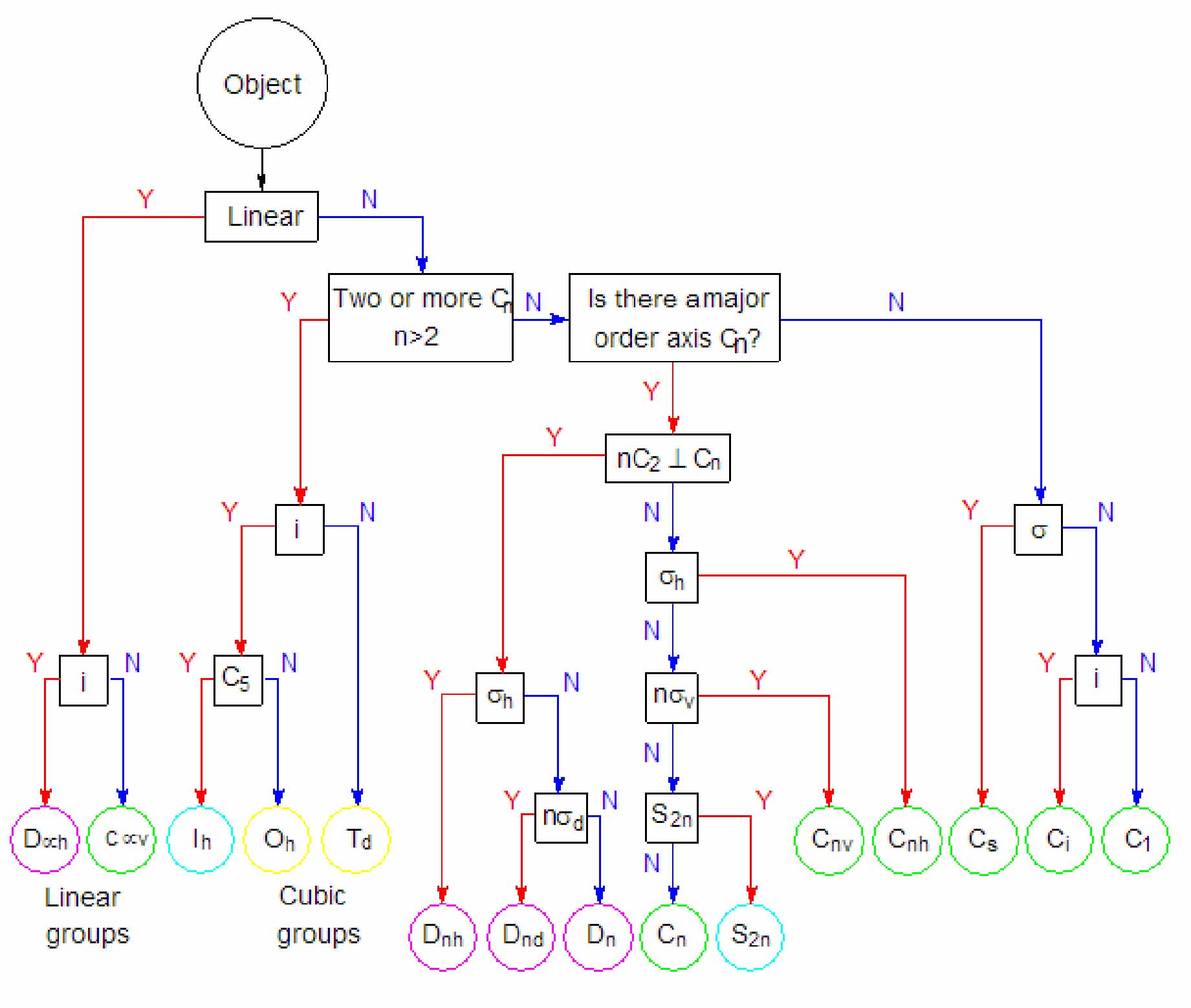
Curved-edges packages are nice objects for the teaching-learning of symmetry descent. Its usage in the classroom induces the students to observe and analyze the symmetry of other common objects.
Usually, the teaching-learning of the symmetry begins from low to high symmetries by adding different symmetry elements and by using different objects (molecules). An alternative approach is to start with a high symmetry object (such as the octahedron) that allows us to exemplify many different symmetry elements at once (Perez-Benitez, 2003). Then, by means of symmetry descent it is possible to get a wide variety of point groups such as in the present case. Moreover, the work with 3D models is a nice teaching method for our students.
Chemicool (2010): "Definition of chirality". On-line: <http://www.chemicool.com/definition/chirality.html>. Accessed on January 26th, 2010.
Hargittai, M; Hargittai, I. (2009). "Symmetry through the eyes of a chemist". Hungary: Springer, p. 358.
Immel, S. (2009). "Molecular Structures of Organic Compounds - Symmetry of Molecules". On-line: <http://csi.chemie.tu-darmstadt.de/ak/immel/script/redirect.cgi?filename=http://csi.chemie.tu-darmstadt.de/ak/immel/tutorials/symmetry/index7.html@O>. Accessed on January 26th, 2010.
Manshad, A. (2010): "Creasing Paper Along Curves". On-line: <http://www.math.nmsu.edu/~breakingaway/Lessons/creasingpaper1/creasingpaper.html>. Accessed on January 26th, 2010.
Perez-Benitez, A.; Arroyo-Carmona, R. E. (2003) "Simetria para principiantes con un modelo octaedrico plegable". Educ. Quim. 14 (4), 225-231.
Reddy, K. Veera (2005). "Symmetry and Spectroscopy of Molecules". New Delhi: New Age Science, pp. 524-526.